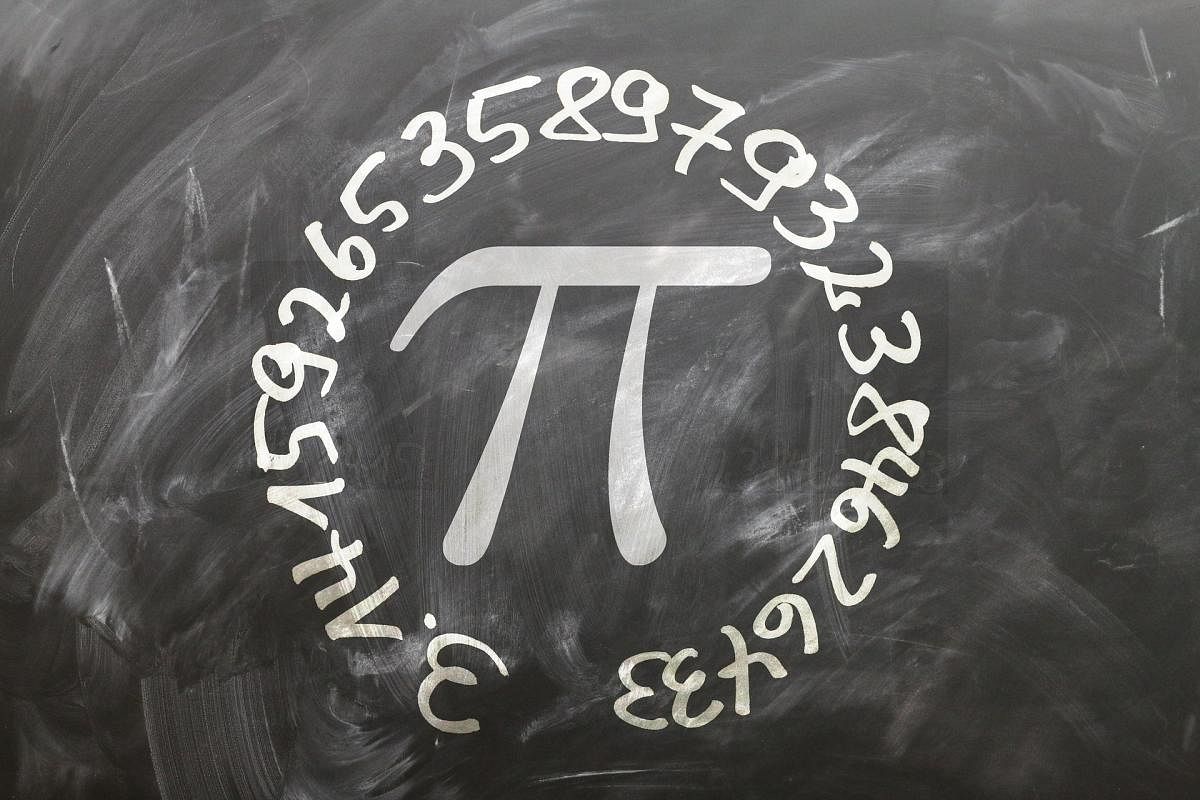
March 14 every year is celebrated as Pi Day.
The reason is clear: the value of the well-known puzzling number Pi, ubiquitous in Mathematics, Physics, engineering, is usually rounded off to 3.14 (Hence the 14th day of the 3rd month of the year).
Those who want more accuracy may include 1 hour 59 minutes and 26 seconds after midnight on that day, i.e. 3.1415926.
Pi has remained an intriguing number for millennia with some of its properties still topics of research.
Elementary geometry enables us to find the perimeter and area of plane figures like triangles, squares, and also of polygons of any number of sides exactly, (i.e. closed planar shapes made up of straight line segments).
However, when it comes to curved shapes like circles and ellipses, the result is not exact.
Although the circumference and area of a circle is expressed by simple formulae and respectively (r being the circle radius), the constant appearing in these formulae is intriguingly inexact and can be evaluated to an arbitrary large number of decimal places.
Indeed, the proof that it is transcendental (cannot be expressed to finite number of decimal places) came late in the 19th century, while that it is irrational (cannot be expressed as a ratio of two numbers) came sometime earlier.
The transcendence of Pi settled once and for all the age-old problem of constructing by straight edge and compass alone, a square equal in area to a given circle.
Lindemann’s proof that Pi is transcendental has not stopped digit hunters from performing ever-more spectacular feats of evaluating it to trillions of decimal places.
Thirty years ago, the record was 500 million decimal place.
Recently, it has been calculated to a new world record, by Emma Haruka, a Google employee in Japan. She calculated it to almost 32 trillion digits (32 followed by 12 zeros). It took 120 days using 25 virtual computers from Google’s cloud computing service.
The previous record of 22.4 trillion was announced by Google in a blog on last year’s Pi Day. This intriguing number, the ratio of the circumference of the diameter of any circle, however large or small, drawn anywhere in the universe, has the same universal value, which, however, is not exact and not expressible to a finite number of decimal places.
The first 38 digits of Pi forms a prime number, while the sum of its first 144 digits is the notorious devil’s number 666.
Although humans know that Pi involves an infinite number of digits, one would not expect robots or computing machines involved in artificial intelligence to know this. In one of the Star Trek episodes, a misbehaving machine is instructed to evaluate Pi and it gets destroyed in the process.
Wise men’s ken
The value of Pi has been known quite accurately even to the ancients. An Egyptian text known as the Rhind Papyrus dating to 1650 BCE (almost 4,000 years ago) has the statement that a circle has the same area as a square whose side is 8/9 the diameter of the circle.
This implies a value of Pi as 3.16049, coming within 0.6 percent of the correct value rounded to five places.
Archimedes proposed a method (algorithm in modern parlance) to evaluate Pi by inscribing in a given circle a series of regular polygons of more and more sides, the larger the number of sides the more closely they will enclose the circle.
Using inscribed and circumscribed polygons of 96 sides, Archimedes was able to estimate Pi rather accurately. The Indian mathematician of yore, Aryabhata, used the modern rounded-off value of 3.1416.
If at all we contact advanced extraterrestrial intelligence, Pi is a number we can share with them. Transmitting Pi in radio pulses (or laser pulses) to arbitrary number of places would closely reveal knowledge of this universal number (independent of choice of units).
Pi enters several areas of Physics and engineering. The Riemann zeta function involving the sum of the reciprocal of the powers of all natural numbers, adds up to various powers of Pi.
The one involving fourth power is seminal for black-body radiation and that involving third power applies to Bose-Einstein condensate. Higher powers appear in string theory.
Right from finding temperatures of celestial bodies to designing furnaces and architectural shapes, functions involving Pi play a crucial role in calculations. Besides estimating distances to celestial objects, there are angular measurements directly involving Pi.
Truly a Pi in the sky, all said and done.
(The author is with Indian Institute of Astrophysics, Bengaluru)